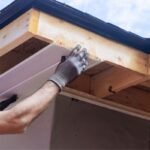What are the Safety Tips for Tree Pruning?
This blog will assist homeowners in determining when and how to Tree Pruning. This page is for homeowners. This post is also recommended for landscaping professionals. This article will provide advice on how to select trees and maintain them. Enjoy reading!
What information does the company require about trimming trees? What tools are required? What are the best tools to use? These questions and many more will be answered in the following paragraphs. Let’s get started!
What if you could go your entire life without having a haircut? Most people will answer that question negatively. You should still get your hair cut regularly so that any split ends can be removed. Your hair can also be kept healthy and styled. Your trees and bushes are just like everyone else. They don’t have hair but they have branches that need to be cut or pruned to encourage healthier and more vigorous growth.
You might be curious as to why you should prune your trees. Are you looking for tree lopping, pruning and wood chipping services? Tree Amigos offers high-quality and affordable services for all your arborist needs. Pruning is essential for healthy growth. Pruning is essential for healthy growth. If you don’t prune your tree, it is more susceptible to becoming infected, stopping growing, producing no fruit, and eventually dying.
What happens after I prune?
After you’ve completed any pruning or trimming, the normal growing season will begin for your trees and shrubs. You will see a more robust growth because you have removed any dead or unhealthy branches.
You can make more sunlight and fresh air by trimming and pruning out unnecessary branches. This improves photosynthesis. This may have an impact on the quality of the vegetation.
Pruning will yield a greater harvest if the tree or shrub that you are trying to prune bears fruit. Why? Why? Because it removes unnecessary branches and allows more plant resources to be used for fruit production.
You will also notice a better shape to your trees after you have properly trimmed and pruned them. If you have ornamental bushes, hiring a tree trimming company is essential to ensure that your trees continue to grow in a visually appealing way.
Safety tips for tree pruning
There are two distinct things about trimming hedges: shaping and shaping bushes and trimming them. Trees can be more difficult to maintain and if they are not properly trimmed, they pose a danger to their safety.
Pole saws are the best tool for controlling dormant plants. However, they are subject to regulation in many areas. Users must either complete a course offered by the local government, or get a license.
Pole saws are not toys. If used properly, pole saws can be a reliable and convenient way to trim thick branches. If you don’t know how to use a pole saw properly, here are some tips.
1. Please Read the Manual
Reading is one of the easiest activities you can do. The user manual should contain all information you need about technical specifications, tools, and safety precautions. You should take the time to carefully read and follow any safety instructions and labels on the pole saw’s manual, packaging, or pole saw itself.
2. Make sure you are wearing the correct gear
Make sure you have all the safety equipment you need. Protect your head with the following items: A hard hat, safety glasses, a respirator, a face mask and work gloves. Boots with good traction are also recommended. Make sure you tie your hair and take out any jewellery.
3. Make sure to use the correct terminology
The design of pole saws is primarily focused on trimming and cutting tree limbs. A pole saw should not be used to cut through trees, shrubs, or other plants. There are many machinery and tools.
4. Please refer to the Conditions
To determine if there are obstructions, examine the area. You shouldn’t be using a saw or pole when it is dark, windy or raining outside. This could make it more difficult to plan your day. Before you cut down trees or trim them, make sure you inspect their condition. Factors like wood rot, withering branches, dead branches, and even the act of cutting can all affect the tree and pose a danger.
5. Take a look at the Pole Saw
You must ensure that your pole saw is in good working order before you begin cutting. Before you start cutting with your pole saw, make sure the chain is properly greased. Also check for missing or worn teeth. Then, check for damage to the sprocket as well as the guide bar. You should also test the safety features of the unit to make sure they are working properly.
6. Clear The Area
You should maintain a security zone by using a perimeter of fifty feet all around. You should not operate the pole saw if there are children or spectators within the immediate vicinity. To prevent animals and people from entering the area, it is best to have someone else patrolling it.
7. Keep it up!
Keep the rod saw upright. It can prove too difficult to use the machines if they are angled towards the floor. It will be easier to control the pole saw if it is longer than vertical. Tap the program to distribute its weight from the arms.
8. Don’t Cut Above Yourself
Even if your pole saw experience is good, it’s not a good idea to cut branches directly above your head. Get active and learn about the various methods for weight loss. Even the smallest mistake could result in you being crushed by the fallen branch. Be careful when trimming or cutting branches.
9. Firm Footing
You can maintain a solid foundation by keeping your feet on the ground, and balance yourself. One foot must always be planted on the ground. You should not use a pole saw with just one hand, but with both.
10. Don’t Like Pruning?
Evergreens with a natural tendency towards a neater and more conical shape are best. You can give them direction as they grow up if they have multiple leaders. But, other than that they won’t need to be pruned. You can plant evergreens near power lines if you cannot avoid it. However, they will tend to be neater and more conical. If you don’t like pruning hedges, you might consider installing a mixed hedgerow with plants instead of more traditional hedging like macrocarpa (C. macrocarpa) or Buxus. You’ve come to the right place if you are looking for tree removal service! Tree Amigos is your best choice!
12. Take a look at the bigger picture
Before you launch an aggressive attack, think about the goals that you have for yourself. Also consider why you feel the urge to grab the chainsaw immediately. This impulse can be overwhelming for many male species.
Take a look at our steps-by-step checklist if you are thinking of pruning. After each cut, think about what you want to do next.
13. Making the Cut
The main trunk, the lateral branches, and the bud should all be cut during pruning. But not too close. The collar at the base and the ridge of the bark at the top of the branch should be cut as closely as possible. The collar contains hormones that accelerate wound healing.
14. No Stubbies
Don’t leave any stubs behind. This is because the wood has fewer hormones, so the wound heals slowly. It is also a common entry point for insects and illnesses, which can lead to dieback. It can also have a terrible appearance.
15. Cutting Techniques For Large Branches
To avoid causing ugly tears in the tree’s bark, don’t cut branches with diameters greater than 3-4 cm. Begin by cutting the opposite side of the branch, approximately 40 cm from the main trunk.
Keep cutting until the branch catches your saw. Then, cut the branch again at 45 degrees and 45 cm from the trunk. This will allow you to break the branch in between the second and third cuts. You will not have to worry about the saw getting stuck and the bark won’t be damaged. The stub can be cut back to a regular cut, as described above, without the danger of damaging the trunk.
16. Are Dead Branches Possible?
These should be your first priority when pruning. You should make it your top priority to remove dead branches from any shrub or tree. This will help improve both the plant’s appearance and health. You will also have a plan for trimming back trees and shrubs thanks to the information you receive.
17. Are Branches Too Close or Crossing?
The next step in pruning is this. Take out any branches that are too close together or rub against each other. This will help prevent any obstruction of light and air circulation, especially if the tree’s purpose is to produce fruit. If the branches touch each other, this will cause a dampening effect that makes it more susceptible to the growth and spread of diseases and fungi.
18. Major Limb Less Than 45 Degrees?
If you have a tree with a major branch growing at a narrow angle to its trunk (less than 45 degrees), it is more likely to fall in high winds. It is best to remove branches with this angle if it is possible to catch it before it becomes too young to be cut. It is important to consider the possible damage that a fallen limb could cause to your tree and to compare the cost of having it removed in a controlled setting.
19. Stop sucking
It will be a good thing for your tree’s beauty and strength to remove any suckers and strong branches from its base. You should do this as soon as possible. These suckers can make the tree look unattractive and deplete its essential nutrients. It is best to get rid of them while they are still young.
20. Troublesome branches
Sometimes, it is necessary to be realistic. For example, if a tree or shrub makes your daily life difficult, it is best to either prune it or remove it completely. Winter is a great time to prune. It is easier to see the structure and leaves of trees or shrubs when it is winter. This makes it easier to create a pleasing shape.






